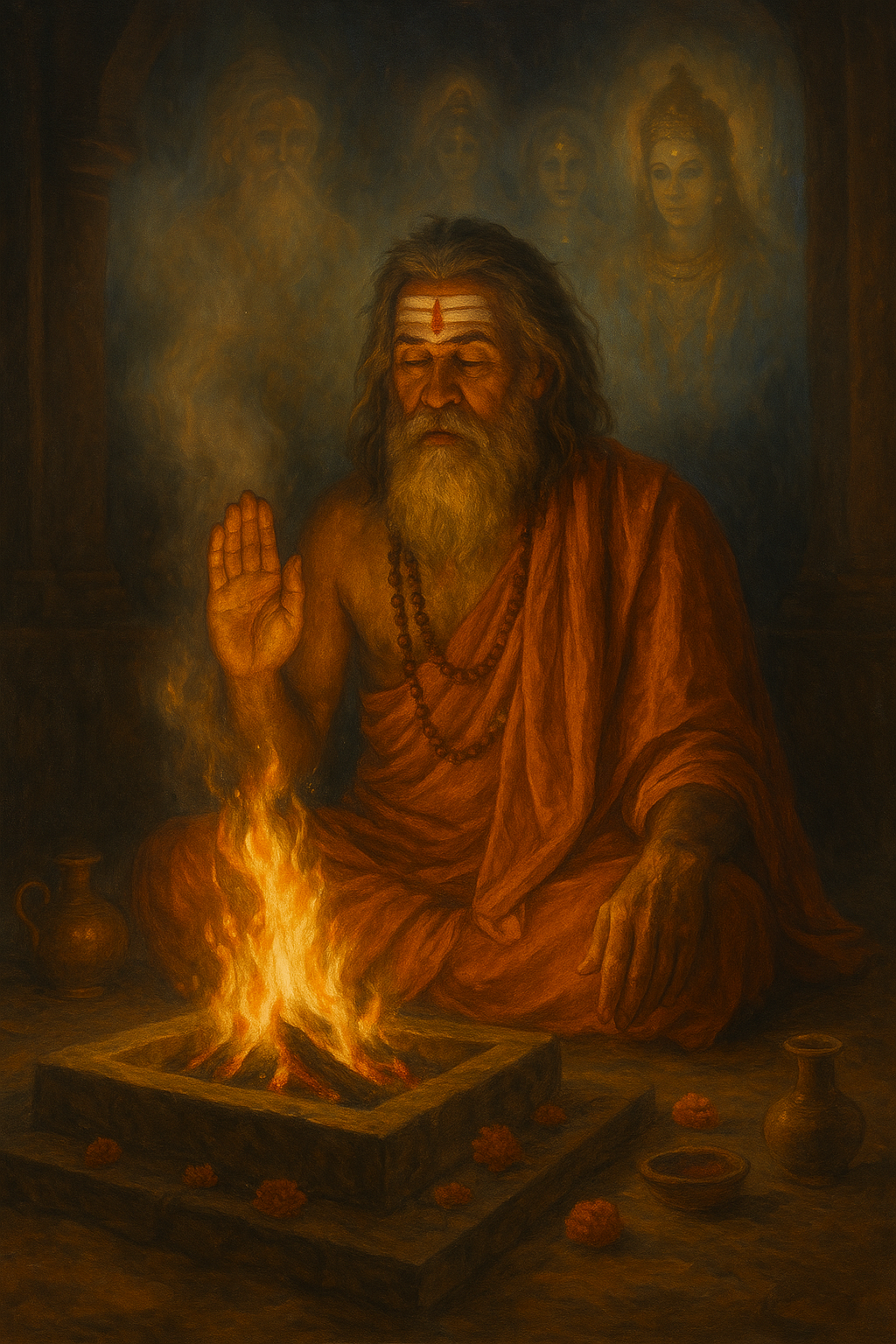Hindu Beliefs in Spirit Communication, Mediumship, and Spiritual Dimensions
Introduction
Hinduism, one of the world’s oldest living religions, offers a vast and multi-layered view of the universe. At its core is the belief that existence is not limited to the physical world—there are numerous subtle dimensions inhabited by gods, ancestors, spirits, and liberated souls. Within this cosmology, practices resembling mediumship and spirit communication have existed for millennia, though expressed in ways deeply tied to Vedic ritual, yogic practice, and devotional traditions.
The Hindu Cosmology: Multiple Spiritual Dimensions
Hindu scriptures describe a universe composed of interpenetrating realms:
Physical Plane (Bhurloka): The world of humans, plants, and animals.
Subtle Realms (Antariksha & Bhuvarloka): Domains of spirits, ancestors (pitrs), and elemental beings.
Celestial Realms (Devaloka & Svarga): Abodes of gods and higher beings, accessible through devotion or ritual merit.
Underworld Realms (Naraka & Patala): Realms of trial, karmic purification, and lower entities.
Liberated Dimensions (Vaikuntha, Kailasa, Brahmaloka): Transcendent realms of union with the divine, beyond rebirth.
This layered universe provides the theological framework for spirit communication and mediumship in Hindu thought.
Spirit Communication in Hindu Traditions
1. Vedic Rituals and Ancestral Connection
Ancient Vedic texts emphasize śrāddha and pitr-yajña—rituals to honor ancestors (pitrs).
Through offerings of food, fire, and mantra, practitioners maintain contact with the deceased, ensuring blessings for the living and peace for the departed.
This is one of the oldest and most structured forms of ancestral communication in Hindu culture.
2. Mediumship and Spirit Possession
In folk Hinduism, deities or spirits may temporarily “descend” into the body of a devotee or medium (oracles, pāṭṭis in South India, or devi-possession in village festivals).
The medium becomes the voice of the deity, offering guidance, healing, or prophecy.
This practice is still widespread in temple festivals and rural traditions.
3. Yogic and Mystical Mediumship
Advanced yogis are described as siddhas with the ability to contact spirits, deities, and even traverse realms of existence through meditation.
Practices such as antar-yoga (inner vision) and samādhi states open direct channels of communication with divine beings or enlightened masters.
Texts like the Yoga Sutras of Patanjali describe siddhis (psychic powers)—clairaudience, clairvoyance, and spirit communication—as byproducts of spiritual discipline.
Ancestors, Ghosts, and Spirits in Hindu Belief
Hinduism acknowledges multiple categories of spirits that interact with humans:
Pitrs (Ancestors): Benevolent spirits honored through rituals.
Bhutas and Pretas (Ghosts): Restless or unsatisfied spirits, often requiring ritual appeasement.
Yakshas, Nagas, and Gandharvas: Semi-divine beings dwelling in subtle realms, sometimes aiding or hindering humans.
Devas (Gods): Higher beings who can communicate with devotees through dreams, visions, or mediumship.
These entities illustrate the rich spectrum of spiritual communication recognized in Hindu cosmology.
Techniques of Spirit Contact
Hindu traditions developed numerous ways of engaging with spirits and higher beings:
Mantras and Chants: Sacred sounds vibrationally align the practitioner with divine or ancestral presences.
Yajna (Fire Rituals): Fire serves as a bridge to the gods and ancestors, carrying offerings across realms.
Dreams and Visions: Dreams are widely regarded as gateways where gods and ancestors deliver messages.
Possession Rituals: Community festivals allow gods to speak through human mediums, strengthening communal bonds.
Meditation and Yoga: Advanced yogis use subtle states to perceive and communicate beyond physical reality.
Comparisons with Western Mediumship
Hindu mediumship shares several parallels with Western Spiritualism:
Shared Features: Trance, possession, ancestral contact, prophecy, healing, and communication with higher beings.
Differences: In Hinduism, spirit communication is rarely for personal evidence of survival. Instead, it’s a religious duty (to honor ancestors), a collective ritual (temple oracles), or a spiritual discipline (yogic siddhis).
This makes Hindu practices both broader and more integrated into the social and cosmic order.
Continuity and Modern Practice
Even today, Hindu communities across India and the diaspora maintain vibrant traditions of spirit communication:
Ancestor rituals (śrāddha, Pitru Paksha).
Deity possession in temples and festivals.
Mediums and oracles guiding communities.
Yogis and gurus recounting visions, spirit contact, and divine revelations.
These practices show that mediumship and multidimensional communication remain central to Hindu spirituality.
Conclusion
Hindu beliefs about spirit communication, mediumship, and spiritual dimensions reveal a cosmology where humans, ancestors, spirits, and gods are in constant interaction. Through rituals, oracles, yogic practice, and visionary experience, Hindus maintain living connections with unseen realms.
Unlike purely evidential mediumship in the West, Hindu spirit communication emphasizes duty, devotion, and cosmic balance—a timeless bridge across the many dimensions of Hindu reality.

